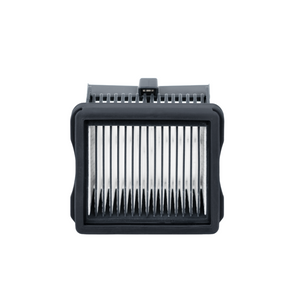Imagine a device that tirelessly cleans your floors without consuming significant electricity! With energy costs rising, every watt counts.
Have you ever wondered just how energy-efficient robot vacuums truly are? While traditional vacuums have been around for decades, the new wave of automated cleaners promises convenience and energy conservation.
This article breaks down the core aspects of robot vacuum energy consumption. Ultimately, you'll understand how these gadgets can save time and money. They can also lower your electricity bill and present a more intelligent choice for your daily life.
Dive into this insightful read about robot vacuums. If you're convinced, check out our Narwal products to find the perfect fit for your home!
How Much Electricity Does A Robot Vacuum Consume?
Familiarizing with the Basics
What's the first thing on your mind regarding robot vacuums? If you have first reflected on electricity usage, you're not alone.
Usually, robot vacuum manufacturers design the latest devices with efficiency in mind. For instance, they design robot vacuums to consume less power than traditional ones.
Power Consumption Metrics
Robot vacuums generally operate between 20 and 40 watts per hour during cleaning cycles. This is modest compared to manual vacuums, which can consume massive power.
For example, Narwal's advanced models boast innovative energy-saving modes. Their engineering ensures they only draw the necessary power when needed.
Smart Charging Mechanism
A significant feature contributing to energy efficiency is smart charging. Narwal's robot vacuums, for instance, feature technologies that halt charging once the battery is full. This technological feature prevents unnecessary power draw.
Factors Affecting Electricity Usage
Several variables influence how much electricity your robot vacuum uses. These include:
|
Factor |
Description |
|
Battery Size |
Larger batteries need more charge, which can increase overall consumption. |
|
Type of Floor and Room Size |
Larger areas or plush carpets might demand more power. |
|
Frequency of Use |
More frequent usage naturally increases electricity consumption. |
|
Productivity |
Newer robotic vacuums typically offer better energy efficiency. |
Calculating Energy Costs
To put this in perspective, let's calculate the annual energy use of a 30-watt robot vacuum running for 1 hour daily:
- Daily consumption: 30 watts-hours
- Annual consumption: 30 watts-hours * 365 days = 10,950 watts-hours = 10.95 kilowatt-hours (kWh)
If the average electricity cost is $0.13 per kWh, the annual cost of using a robot vacuum is:
- Annual cost: 10.95 kWh * $0.13 = $1.42
This calculation illustrates the cost-effectiveness of robot vacuums. Its affordability enables households to maintain cleanliness without a hefty electricity bill. Also, the efficiency is impressive, especially considering the robotic cleaner's convenience and time savings.
Additional Benefits Beyond Energy Savings
Environmental Impact
Using a robot vacuum reduces environmental impact. Modern models operating on low power emit a smaller carbon footprint than traditional vacuum cleaners.
Autonomous Functionality
You can easily program these smart devices to clean at optimal times. This action reduces electricity usage during peak hours, further augmenting savings.
Besides, Narwal's latest models have features like mapping and scheduled cleaning. These features augment the efficient use of power.
Real-World Scenarios
For example, if you have a busy schedule and run the vacuum while you're out, it'll maintain cleanliness without burdening your electricity. Users marvel at the seamless integration of these devices into their energy-efficient lifestyle.
Pros and Cons of Robot Vacuums
Pros:
- Energy efficiency- Consumes much less electricity than traditional vacuums.
- Convenience- Automatic cleaning with minimal human interaction.
- Smart features- Includes advanced attributes like scheduling and mapping.
Cons:
- Initial cost- Often pricier than some traditional alternatives.
- Maintenance needs- Requires consistent maintenance to function optimally.
- Thoroughness- Might not clean as profoundly in high-pile carpets compared to powerful traditional vacuums.
Insights from Narwal's Products

Narwal, a leader in innovative household devices, emphasizes efficiency. After all, Narwal models boast smart navigation and adaptive cleaning modes.
So, Narwal robots can adjust power use based on floor type and debris amount. These features maximize cleanliness while minimizing energy consumption.
Upcoming Innovations in Energy Efficiency
Robot vacuums have a bright future due to ongoing developments in battery technology and cleaning algorithms driven by artificial intelligence. These advancements aim to reduce energy usage even more while improving cleaning effectiveness.
Maximizing Efficiency: Tips and Tricks
Want to squeeze every bit of efficiency from your robot vacuum? Try these savvy tips:
|
Tip |
Description |
|
Scheduled cleanings |
Program to run during off-peak hours. |
|
Regular maintenance |
Clean its filters and brushes regularly for optimal performance. |
|
Optimized paths |
Arrange furniture to create clear paths, reducing its workload. |
|
Eco mode |
Switch to eco-friendly modes that are available on many models. |
Environmental Impact of Robot Vacuums
A wise selection of a robot vacuum promotes greener environmental choices. These gadgets typically use less energy than traditional vacuums, shaving off some greenhouse gas emissions. So, opt for models boasting eco-friendly features to shrink your environmental footprint further.
Conclusion
Robot vacuums are more than just a cleaning marvel. Their energy-efficient features align with a modern, eco-conscious lifestyle, thanks to their smart charging and low power consumption.
Understanding their electricity consumption helps make informed decisions that save costs and benefit the environment. After all, Narwal offers various sustainable solutions to address these needs.
Ready to transform your cleaning routine? Explore Narwal's latest models and switch today for an energy-saving and more efficient cleaning. Don't forget to subscribe to our newsletter or contact us for the latest tips on eco-friendly living about robot vacuums!























































